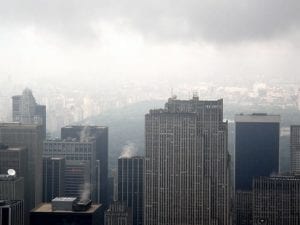Recently published findings by Yale University have added to accumulating evidence of what is referred to as widening racial and economic gap when it comes to air pollution in the United States. Cheryl Katz reports on Environmental Health News that the air pollution in less affluent, non-white and low-income neighbourhoods in that country, “contain more hazardous ingredients than in white ones.” Latinos had the highest exposure while whites the lowest. Apparently, these poorer communities could face greater health challenges even if their air quality meets the federal standards.
According to Katz, “A pervasive air pollutant, the fine particulate matter (PM) known as PM2.5 is a mixture of emissions of diesel engines, power plants, refineries and other sources of combustion. Often called soot, the microscopic particles penetrate deep into the lungs.” The source of pollution is indicative of the toxins it contains. People that live near refineries are exposed to nickel and vanadium while neighbourhoods along highways have higher nitrates from vehicle exhaust fumes. Those resident in coal-fired power plants suffer from higher sulphate contents. These can cause cancers, lung disease and even cardiovascular diseases. PM2.5 has been associated with high levels of childhood asthma and there where the toxin is prevalent, the prevalence of childhood asthma was four times higher when compared to other areas. This scenario can apply to South Africa where the social divide between those more affluent and the impoverished is great. According to the Air Quality Act of 2004, the standards for sulphur dioxide, nitrogen dioxide, ozone, lead and carbon monoxide had to be complied with immediately. The Act came into force on 1 April 2010. However, concerning is that for PM, compliance data varies from immediate to end December 2014 and for benzene, the same.Yvanne Scorgie from the National Association for Clean Air (NACA) writes that “South Africa is plagued by a number of pressing and persistent air pollution problems in addition to facing various new emerging air pollution issues. High ambient sulphur dioxide and fine particulate concentrations experienced in many urban areas are due primarily to fuel burning within the household, industrial and power generation sectors.”
Carbon tax, proposed for the next financial year will go a long way to reduce emissions by industry but greener and cleaner alternatives must be found in informal settlements and other areas without electricity. Source: www.environmentalhealthnews.org







